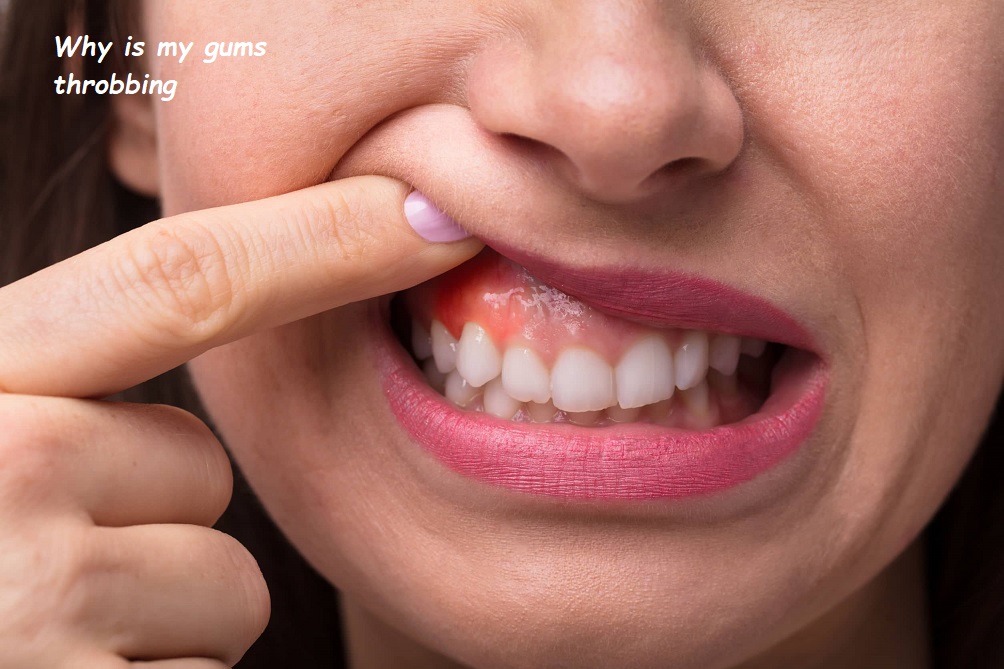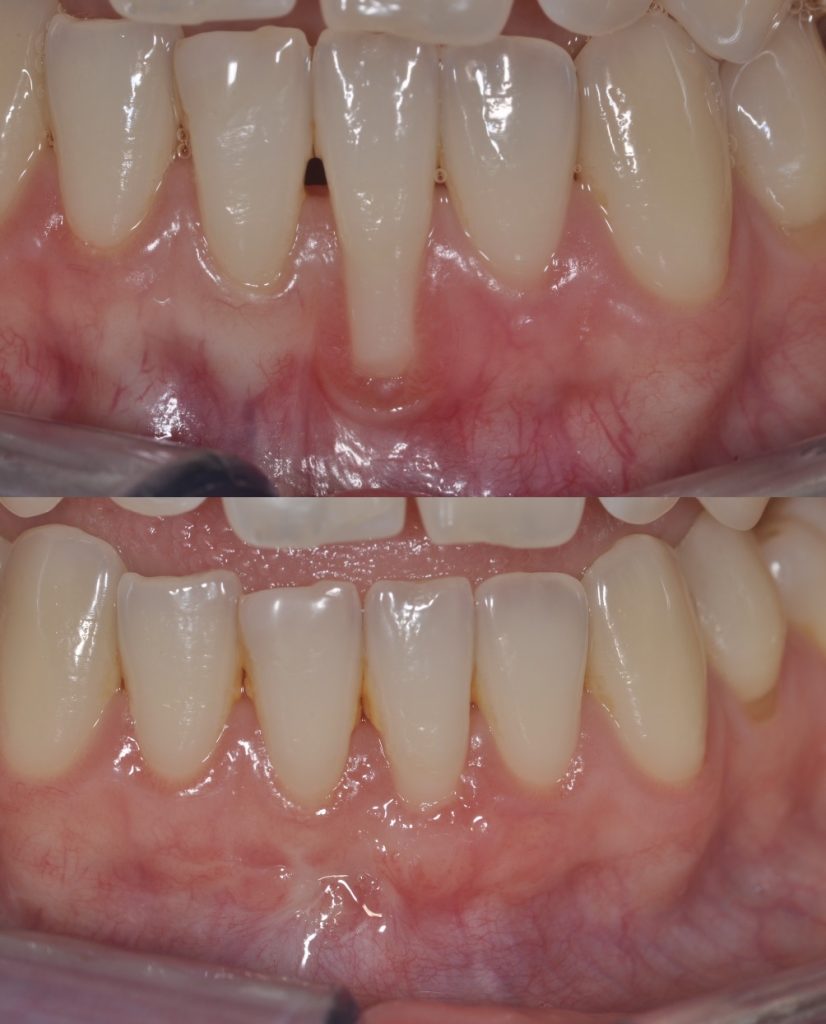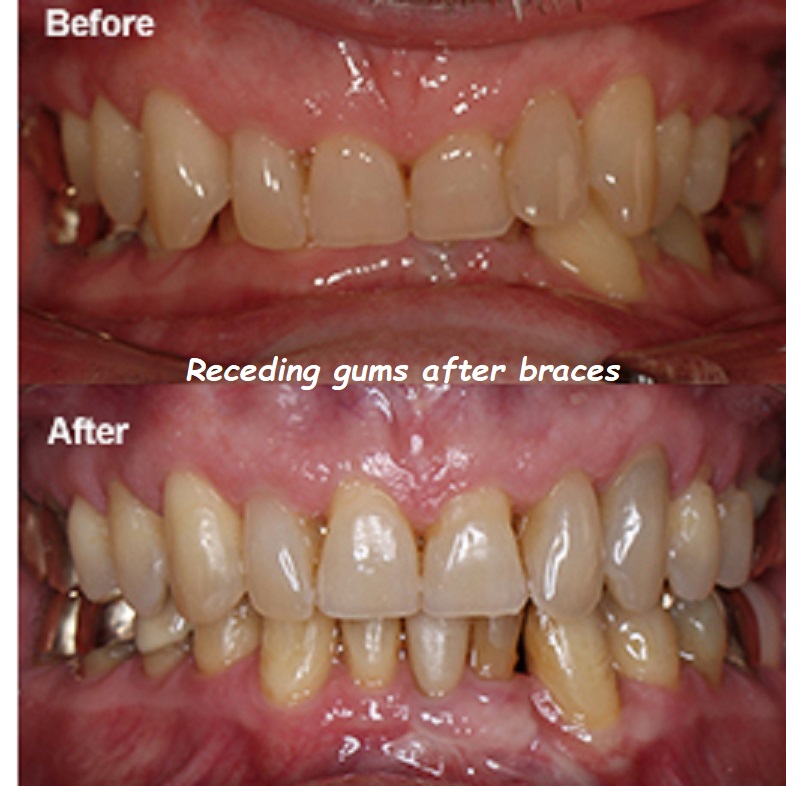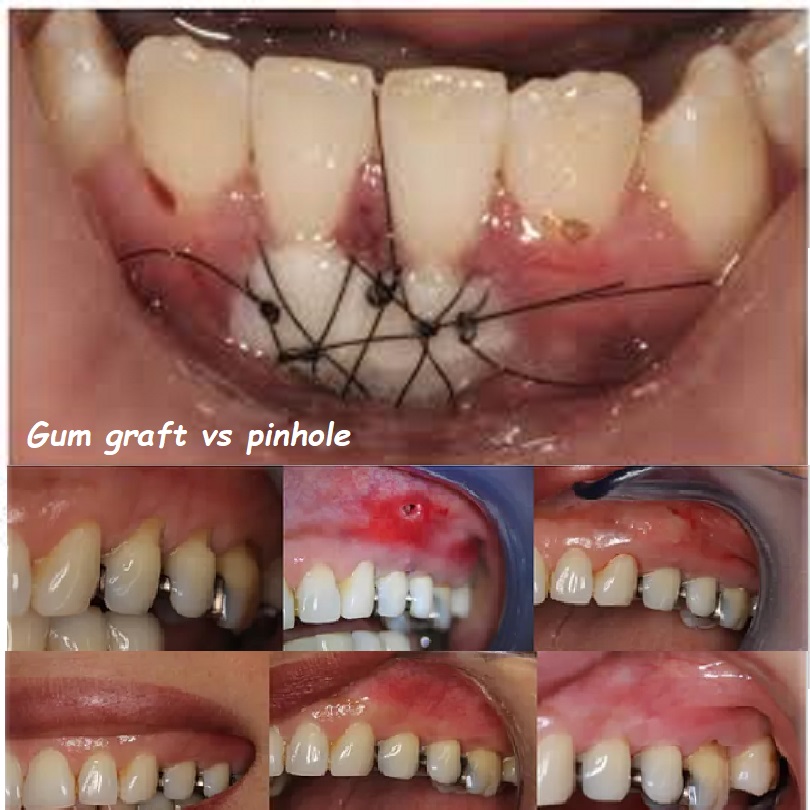black gums
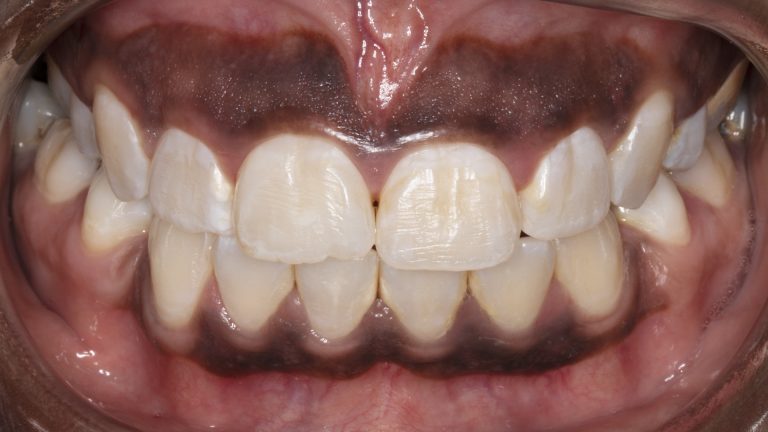
Understanding Black Gums: Causes, Treatments, and Prevention
Gum health is an essential aspect of overall oral health, and changes in gum color can be a cause for concern. Black gums, in particular, can be alarming for many people. If you’re noticing black gums, you may wonder about the underlying causes and whether they indicate a serious health issue. This comprehensive guide will explore the reasons behind black gums, delve into potential treatments, and provide preventive measures to maintain healthy gums.
What Are Black Gums?
Black gums refer to the presence of dark or black pigmentation in the gum tissue. This pigmentation can vary from dark brown to deep black and may affect the entire gum line or appear as localized spots. While black gums are not always a sign of a severe medical condition, they can sometimes indicate underlying health issues that require attention.
Common Causes of Black Gums
1. Genetic Factors
One of the primary causes of black gums is genetics. People with darker skin tones are more likely to have higher melanin levels, which can result in naturally darker gums. This is a normal variation and does not indicate any health problems.
2. Smoking
Smoking is a significant factor that can lead to black gums. The chemicals in tobacco products can cause melanocytes (cells that produce melanin) to produce more pigment, leading to darker gums. This condition is known as smoker’s melanosis.
3. Medications
Certain medications can cause changes in gum pigmentation. Medications such as minocycline (an antibiotic) and antimalarial drugs are known to cause black or dark-colored gums as a side effect. This pigmentation change is generally harmless but can be concerning for those affected.
4. Amalgam Tattoos
Amalgam tattoos occur when tiny particles of amalgam (a material used in dental fillings) become embedded in the gum tissue during dental procedures. These particles can cause a localized dark spot on the gums, which appears black or blue-gray.
5. Addison’s Disease
Addison’s disease is a rare endocrine disorder that affects the adrenal glands. One of the symptoms of Addison’s disease is hyperpigmentation of the skin and mucous membranes, including the gums. This can result in black or dark-colored gums.
6. Peutz-Jeghers Syndrome
Peutz-Jeghers syndrome is a genetic disorder characterized by the development of benign polyps in the gastrointestinal tract and dark pigmented spots on the mucous membranes, including the gums. This condition is rare but can cause black gums.
7. Acute Necrotizing Ulcerative Gingivitis (ANUG)
ANUG, also known as “trench mouth,” is a severe gum infection that can cause black or dark-colored gums. This condition is characterized by painful, bleeding gums and the presence of ulcers. Immediate treatment is necessary to prevent further complications.
8. Oral Melanoma
Oral melanoma is a rare but serious type of cancer that can cause black or dark pigmented lesions in the mouth, including the gums. It is essential to have any suspicious dark spots on the gums evaluated by a dental professional to rule out oral melanoma.
Diagnosing Black Gums
If you notice black gums and are concerned about the underlying cause, it’s crucial to seek a professional diagnosis. A dentist or healthcare provider can perform a thorough examination to determine the reason for the pigmentation. Here are some diagnostic methods they may use:
1. Visual Examination
A dentist will visually inspect the gums and oral cavity for any signs of abnormal pigmentation, lesions, or other symptoms. They may look for patterns and characteristics that can help identify the cause.
2. Medical History
Providing a detailed medical history, including any medications you are taking and any underlying health conditions, can help the dentist identify potential causes of black gums.
3. Biopsy
In cases where the cause of black gums is unclear or there are suspicious lesions, a biopsy may be performed. This involves taking a small sample of the pigmented tissue and examining it under a microscope to rule out malignancy or other conditions.
4. Blood Tests
Blood tests may be conducted to check for underlying systemic conditions, such as Addison’s disease or other hormonal imbalances, that could be causing the pigmentation changes in the gums.
Effective Treatments for Black Gums
The treatment for black gums depends on the underlying cause. Once the cause is identified, appropriate treatment options can be implemented to address the pigmentation and improve gum health. Here are some common treatments for different causes of black gums:
1. Smoking Cessation
If smoking is the cause of black gums, quitting smoking is the most effective way to prevent further pigmentation changes and improve overall oral health. Smoking cessation programs and support from healthcare providers can help individuals quit smoking successfully.
2. Medication Adjustment
If medications are causing black gums, consulting with a healthcare provider about alternative medications or adjusting the dosage may help reduce the pigmentation. Do not stop taking any prescribed medication without consulting your doctor.
3. Dental Cleaning and Polishing
For cases of smoker’s melanosis or mild pigmentation changes, professional dental cleaning and polishing can help improve the appearance of the gums. Regular dental check-ups and cleanings are essential for maintaining healthy gums and preventing further pigmentation changes.
4. Laser Treatment
Laser treatment can be used to remove or lighten areas of hyperpigmentation in the gums. This procedure involves using a laser to target and break down the pigmented cells, resulting in a more uniform gum color. Laser treatment is minimally invasive and can provide effective results.
5. Treatment for Underlying Conditions
For cases where black gums are caused by underlying conditions such as Addison’s disease or Peutz-Jeghers syndrome, treating the primary condition is essential. This may involve hormone replacement therapy, medication, or other medical treatments to manage the underlying condition and reduce gum pigmentation.
6. Addressing Amalgam Tattoos
If an amalgam tattoo is causing a localized dark spot on the gums, a dentist can remove the amalgam particles through a minor surgical procedure. This can help restore the natural color of the gums in the affected area.
7. Treating ANUG
Acute Necrotizing Ulcerative Gingivitis (ANUG) requires immediate treatment to prevent further complications. Treatment typically involves a combination of antibiotics to fight infection, professional dental cleaning to remove plaque and tartar, and improved oral hygiene practices to promote healing.
8. Oral Melanoma Treatment
Oral melanoma is a serious condition that requires prompt treatment by a specialist. Treatment options may include surgery to remove the melanoma, radiation therapy, and chemotherapy. Early detection and treatment are crucial for improving outcomes.
Preventive Measures for Black Gums
Preventing black gums involves maintaining good oral hygiene and adopting healthy lifestyle habits. Here are some preventive measures to consider:
1. Maintain Good Oral Hygiene
- Brush Regularly: Brush your teeth at least twice a day using a soft-bristled toothbrush and fluoride toothpaste.
- Floss Daily: Flossing helps remove plaque and food particles from between the teeth and along the gumline.
- Use Mouthwash: An antibacterial mouthwash can help reduce plaque and prevent gum disease.
2. Regular Dental Check-Ups
- Professional Cleanings: Regular dental check-ups and professional cleanings can help prevent gum disease and detect issues early.
- Routine Examinations: Regular examinations allow your dentist to monitor your oral health and address any concerns promptly.
3. Healthy Diet
- Limit Sugary Foods and Drinks: Reducing your intake of sugary foods and drinks can help prevent tooth decay and gum disease.
- Eat a Balanced Diet: A diet rich in vitamins and minerals supports overall oral health. Foods high in vitamin C, for example, can help maintain healthy gums.
4. Avoid Tobacco Products
- Quit Smoking: Smoking can significantly increase the risk of gum disease and other oral health issues. Quitting smoking can improve your overall health and reduce gum pigmentation.
5. Protect Your Teeth
- Mouthguards: If you grind or clench your teeth, consider using a mouthguard to protect your teeth and gums from excessive force.
- Avoid Hard Foods: Be mindful of hard or sharp foods that can injure your gums.
6. Manage Stress
- Stress Reduction Techniques: Practice stress reduction techniques such as yoga, meditation, or regular exercise to reduce the risk of teeth grinding and clenching.
Conclusion
Black gums can be caused by various factors, including genetic predisposition, smoking, medications, amalgam tattoos, Addison’s disease, Peutz-Jeghers syndrome, Acute Necrotizing Ulcerative Gingivitis (ANUG), and oral melanoma. While black gums are not always a sign of a serious medical condition, they can sometimes indicate underlying health issues that require attention.
By understanding the potential causes and seeking professional diagnosis and treatment, you can address the pigmentation changes effectively. Maintaining good oral hygiene, regular dental check-ups, a healthy diet, and avoiding tobacco products are crucial steps in preventing black gums.
If you find yourself wondering, “why do I have black gums?” it’s important to take action promptly. By following the preventive measures and treatment options discussed in this article, you can improve the appearance of your gums and ensure long-term oral health. Remember, early intervention and consistent care are key to maintaining a healthy and confident smile.
What causes your gums to turn black?
Several factors can cause gums to turn black:
- Melanin: Individuals with darker skin tones naturally have more melanin, which can cause darker gums.
- Smoking: Tobacco use can lead to melanosis, a condition that causes the gums to darken.
- Amalgam Tattoos: Silver fillings can sometimes leave a gray or black discoloration on the gums.
- Medication Side Effects: Certain medications can cause pigmentation changes in the gums.
- Acute Necrotizing Ulcerative Gingivitis (ANUG): This severe form of gum disease can cause black or gray ulcers on the gums.
- Poor Oral Hygiene: Neglecting oral care can lead to buildup of plaque and tartar, contributing to gum discoloration.
- Genetics: Some people are genetically predisposed to having darker gums.
How to treat black gums?
Treatment for black gums depends on the underlying cause:
- Quit Smoking: If smoking is the cause, quitting can help prevent further darkening.
- Improve Oral Hygiene: Regular brushing, flossing, and professional dental cleanings can improve gum health.
- Laser Treatment: Laser therapy can remove dark pigmentation from the gums.
- Gum Depigmentation Surgery: A procedure to remove the outer layers of pigmented gum tissue.
- Medication Review: Consult with your doctor if a medication is causing pigmentation changes.
Can black gums be removed?
Yes, black gums can be treated and lightened depending on the cause. Laser treatments, gum depigmentation surgery, and improved oral hygiene are some effective methods. Consulting a dentist for an accurate diagnosis and appropriate treatment plan is essential.
What color are unhealthy gums?
Unhealthy gums can appear in various colors:
- Red: Inflammation due to gingivitis or gum disease.
- White: Indicative of fungal infections, leukoplakia, or anemia.
- Purple/Blue: Poor blood circulation or cyanosis.
- Black: Can be due to smoking, poor oral hygiene, or certain medications.
Are dark gums unhealthy?
Dark gums are not necessarily unhealthy. In many cases, they are a result of natural melanin pigmentation, especially in individuals with darker skin tones. However, if the darkening is due to smoking, poor oral hygiene, or disease, it can indicate an underlying health issue that needs to be addressed.
Is Black gum Curable?
The curability of black gums depends on the cause:
- Natural Pigmentation: If dark gums are due to natural pigmentation, they are not a health concern but can be lightened with cosmetic treatments.
- Smoking-Induced: Quitting smoking can prevent further darkening, and treatments like laser therapy can help lighten the gums.
- Disease-Related: Treating the underlying disease, such as ANUG, can improve the color of the gums.
- Medication-Induced: Consulting a doctor to change the medication may help if the darkening is a side effect.
How to remove black stains from gums?
To remove black stains from gums:
- Laser Treatment: Laser therapy can effectively remove dark pigmentation.
- Gum Depigmentation Surgery: A surgical procedure to remove the outer layers of pigmented gum tissue.
- Improve Oral Hygiene: Regular brushing, flossing, and professional dental cleanings can help reduce stains caused by plaque and tartar.
- Quit Smoking: Stopping smoking can prevent further darkening and improve overall gum health.
How to whiten gums?
To whiten gums:
- Professional Cleaning: Regular dental cleanings can help remove stains and improve gum color.
- Laser Treatment: Laser therapy can lighten dark pigmentation.
- Gum Depigmentation Surgery: A procedure to remove the outer pigmented layers of gum tissue.
- Improve Oral Hygiene: Consistent brushing, flossing, and use of antiseptic mouthwash.
- Quit Smoking: Reducing or quitting smoking can improve gum color.
What does an unhealthy mouth look like?
An unhealthy mouth can exhibit several signs:
- Red, Swollen Gums: Indicating inflammation or gum disease.
- Bleeding Gums: Commonly seen with gingivitis or periodontitis.
- Bad Breath: Persistent bad breath can indicate oral health issues.
- White Patches: May indicate fungal infections, leukoplakia, or other conditions.
- Black or Brown Stains: Can be due to smoking, poor oral hygiene, or medication side effects.
- Tooth Decay: Visible cavities or dark spots on teeth.
- Loose Teeth: A sign of advanced gum disease.
- Pain or Sensitivity: Discomfort while eating or drinking, especially with hot or cold substances.
By maintaining proper oral hygiene, regular dental check-ups, and addressing any concerns promptly, many of these issues can be prevented or treated effectively.
How do I turn my gums back pink?
Turning gums back to a healthy pink color involves several steps:
- Maintain Good Oral Hygiene: Brush your teeth at least twice a day and floss daily to remove plaque and prevent gum disease.
- Regular Dental Cleanings: Visit your dentist regularly for professional cleanings to remove tartar and plaque buildup.
- Quit Smoking: Smoking can cause gums to darken, so quitting can help improve gum color.
- Healthy Diet: Consume a balanced diet rich in vitamins and minerals, particularly Vitamin C, which is essential for gum health.
- Hydration: Drink plenty of water to keep your mouth hydrated and help wash away food particles and bacteria.
- Use an Antiseptic Mouthwash: An antiseptic mouthwash can help reduce bacteria and keep gums healthy.
How to cure gum disease without a dentist?
While professional dental care is crucial for treating gum disease, you can take steps at home to manage and improve gum health:
- Improve Oral Hygiene: Brush and floss regularly to remove plaque.
- Use Antibacterial Mouthwash: Over-the-counter mouthwashes with antibacterial properties can help reduce bacteria in the mouth.
- Oil Pulling: Swishing with coconut oil or sesame oil may help reduce bacteria and improve gum health.
- Salt Water Rinse: Rinsing with warm salt water can reduce inflammation and promote healing.
- Stay Hydrated: Drinking water helps maintain a healthy oral environment.
- Healthy Diet: Eat foods rich in vitamins and minerals, particularly Vitamin C and D.
How to clean gums?
To clean gums effectively:
- Brush Properly: Use a soft-bristled toothbrush and gentle circular motions to clean along the gumline.
- Floss Daily: Flossing removes food particles and plaque between teeth and along the gumline.
- Use Mouthwash: An antiseptic mouthwash can help kill bacteria that cause gum disease.
- Regular Dental Visits: Professional cleanings can remove tartar buildup that brushing and flossing can’t reach.
How to get healthy gums again?
To regain healthy gums:
- Consistent Oral Hygiene: Brush twice daily and floss once daily.
- Balanced Diet: Eat a diet rich in fruits, vegetables, and lean proteins to provide essential nutrients.
- Hydration: Drink plenty of water to maintain oral hydration.
- Avoid Tobacco: Quit smoking or using tobacco products.
- Regular Dental Checkups: Visit your dentist regularly for cleanings and checkups.
- Manage Stress: Stress can affect oral health, so practice stress-reducing activities.
How to reverse gum disease?
To reverse gum disease, especially in its early stages:
- Improve Oral Hygiene: Brush and floss regularly.
- Professional Cleanings: Schedule regular dental cleanings to remove plaque and tartar.
- Antibacterial Mouthwash: Use an antiseptic mouthwash to reduce bacteria.
- Healthy Diet: Maintain a diet rich in nutrients that support gum health.
- Quit Smoking: Smoking can exacerbate gum disease, so quitting is essential.
- Follow Dentist’s Advice: Follow any additional treatment plans or advice from your dentist.
What color is an infected gum?
Infected gums can exhibit the following colors:
- Red: Signifying inflammation and irritation.
- Purple or Dark Red: Indicating more severe inflammation or infection.
- White or Pale: Could indicate a fungal infection or leukoplakia.
- Gray or Black: In cases of necrotizing periodontal disease or severe infection.
How to remove black gums naturally?
To remove black gums naturally, consider these approaches:
- Quit Smoking: Eliminating tobacco use can prevent further darkening.
- Hydrogen Peroxide Rinse: Dilute hydrogen peroxide with water and use it as a mouth rinse (consult a dentist before use).
- Oil Pulling: Swishing with coconut or sesame oil may help improve gum health.
- Good Oral Hygiene: Regular brushing and flossing to prevent plaque buildup.
- Healthy Diet: Ensure your diet includes foods rich in vitamins and minerals, especially those good for oral health.
Why is my gum going black?
Gums can turn black for several reasons:
- Melanin: Increased melanin production, especially in individuals with darker skin tones.
- Smoking: Tobacco use can cause pigmentation changes in the gums.
- Medications: Certain medications can lead to pigmentation changes.
- Amalgam Tattoos: Discoloration from silver fillings.
- Poor Oral Hygiene: Plaque and tartar buildup can lead to gum discoloration.
- Gum Disease: Severe infections like ANUG can cause gums to turn black or gray.
Are black gums unattractive?
Perceptions of attractiveness are subjective, but black gums can be a cosmetic concern for some people. More importantly, black gums may indicate underlying health issues such as smoking, medication side effects, or gum disease, which should be addressed for overall oral health.
If black gums are a cosmetic concern, consult with a dentist to explore options like gum depigmentation or laser treatments. Maintaining good oral hygiene, quitting smoking, and regular dental visits can also help improve the appearance and health of your gums.



